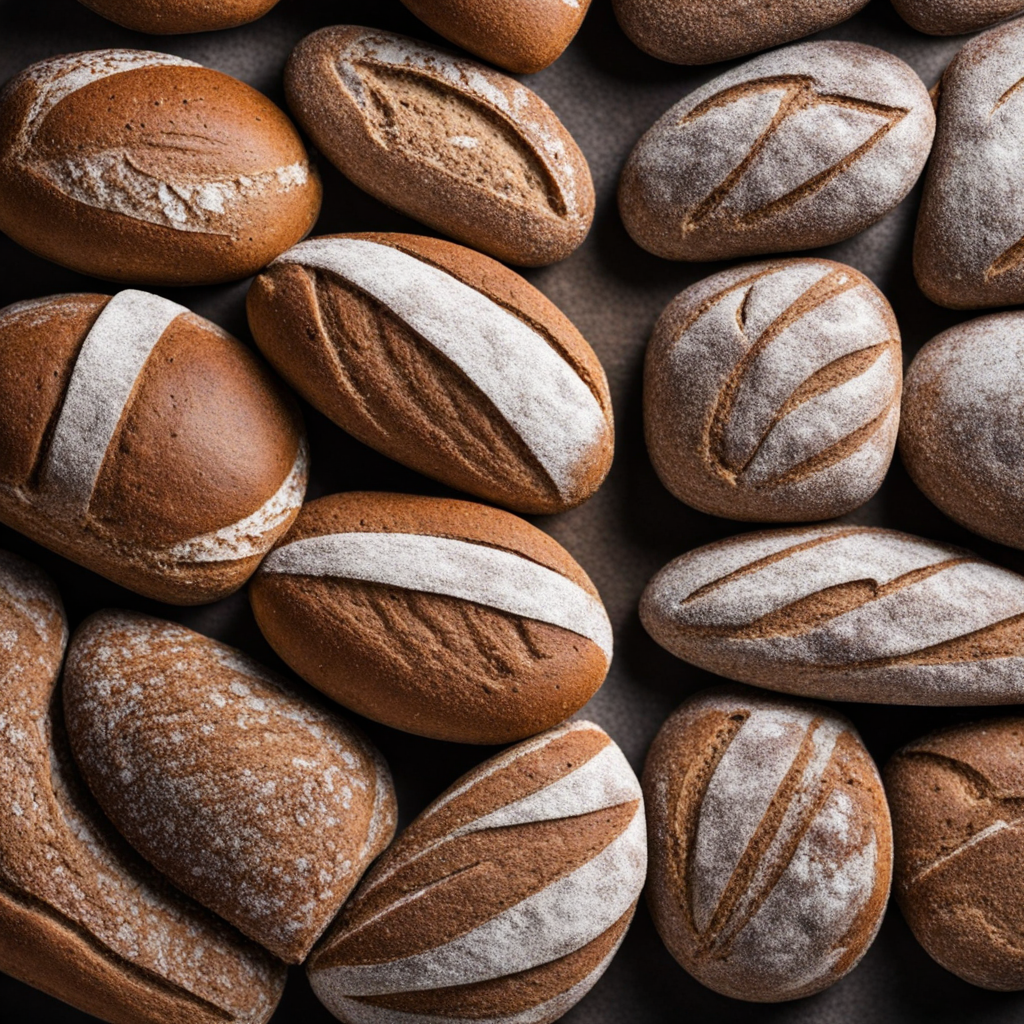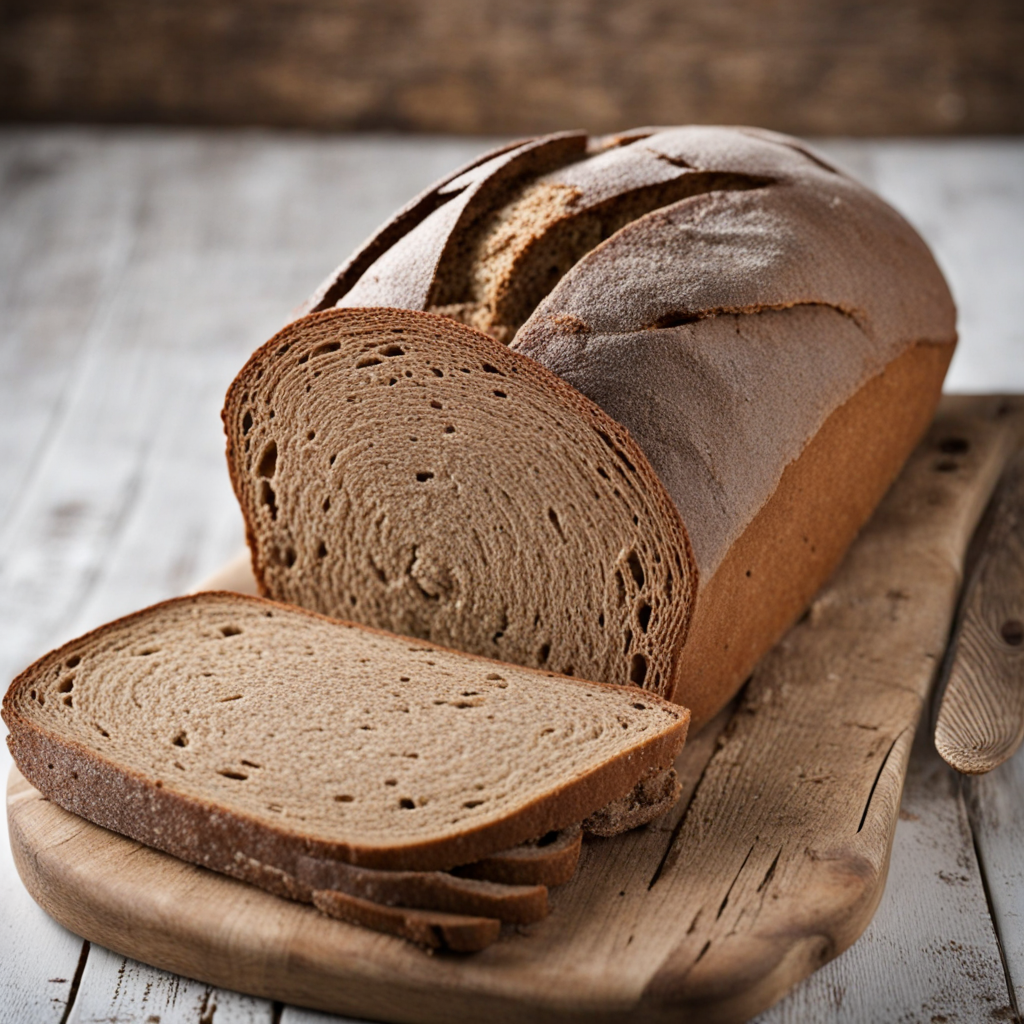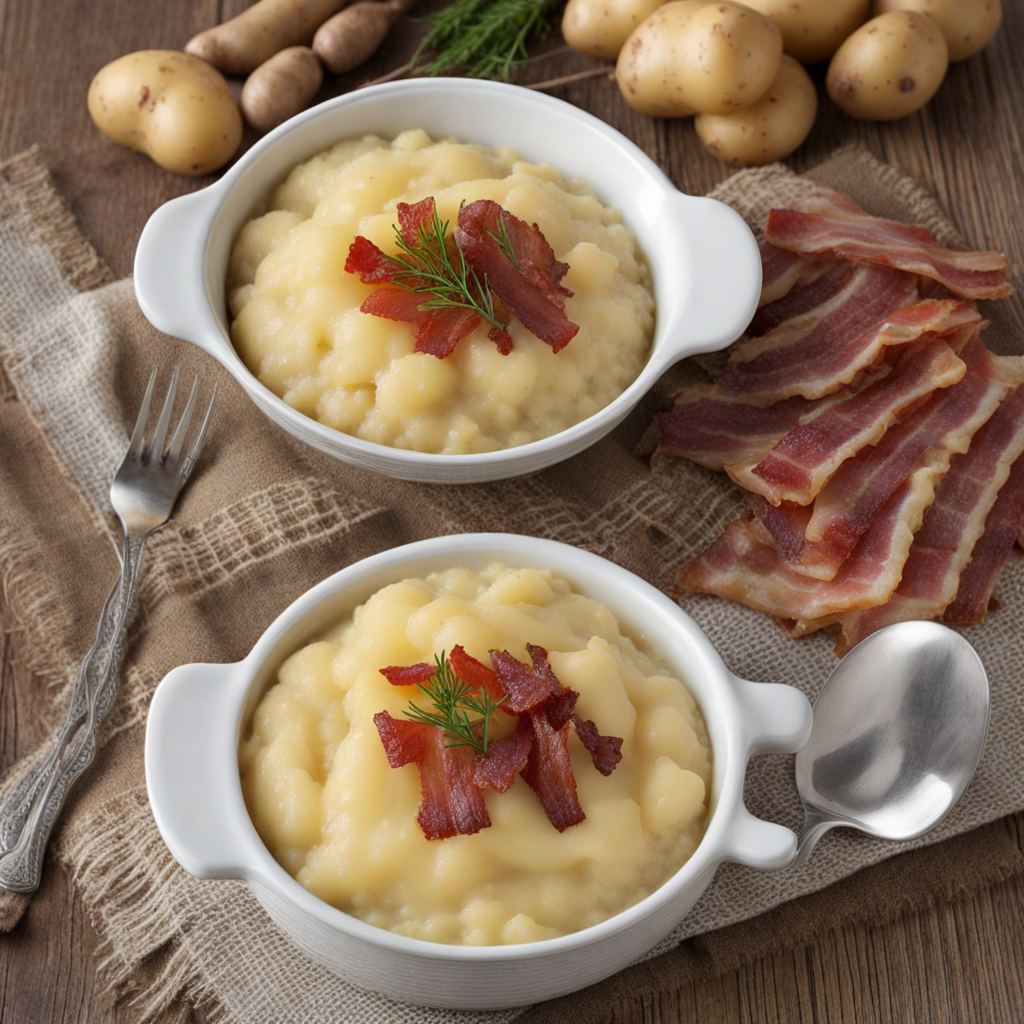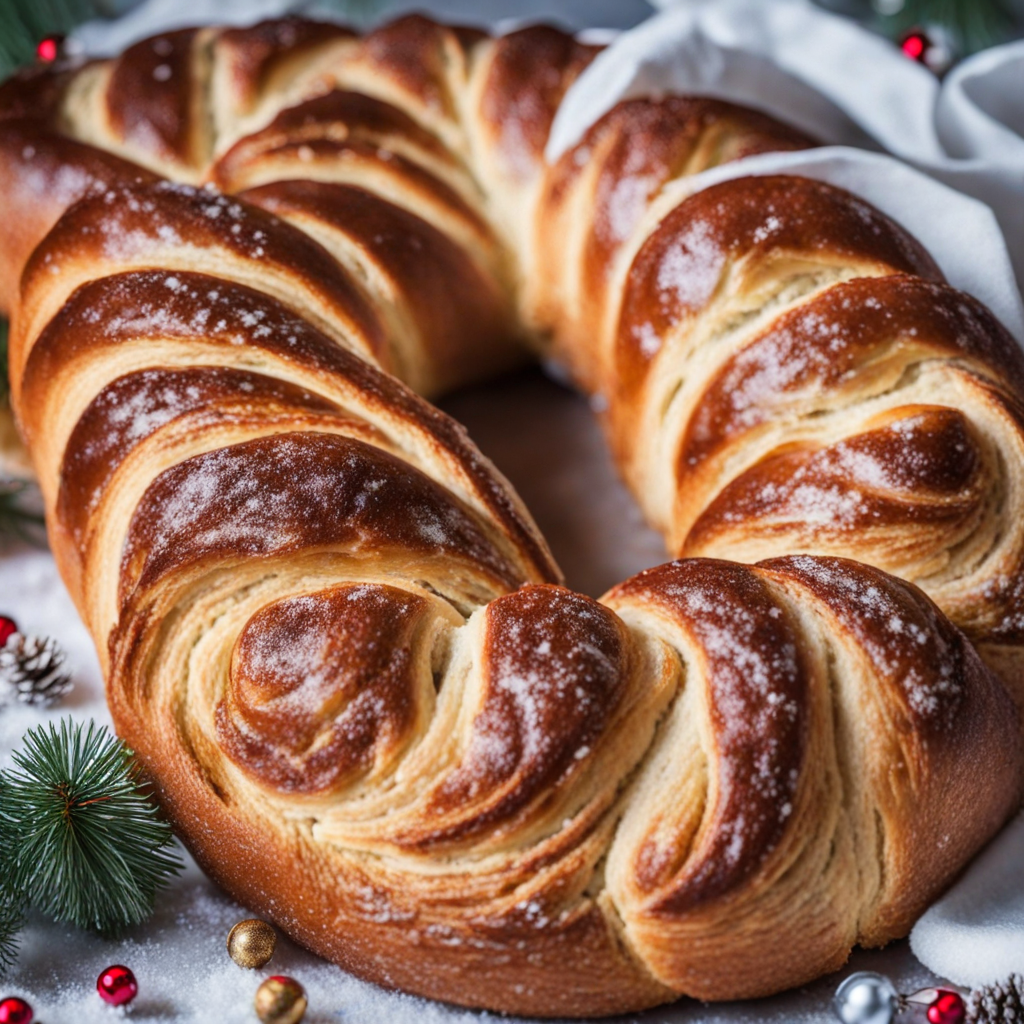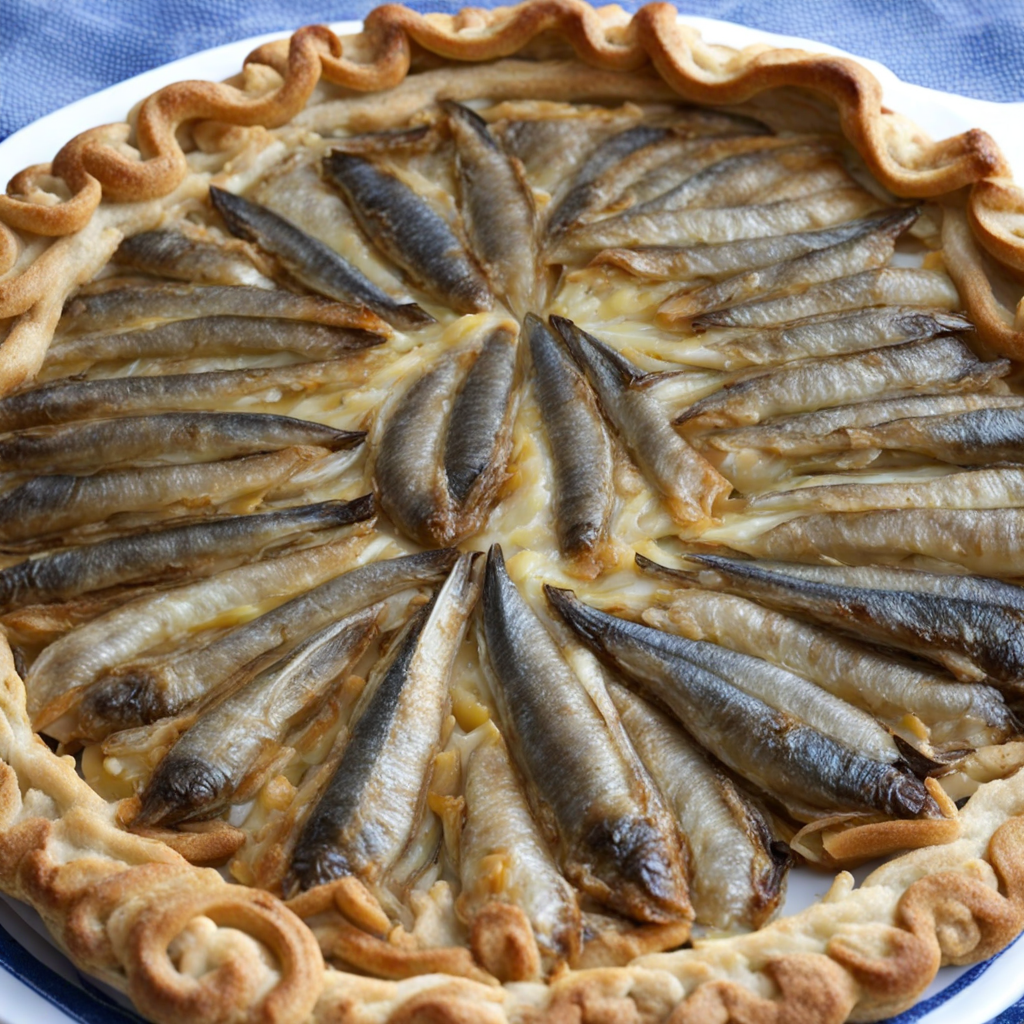Sourdough Rye Bread
Sourdough Rye Bread from Estonia is a delightful fusion of tradition and flavor, deeply rooted in the country’s culinary heritage. This bread is crafted primarily from rye flour, which lends it a dense, hearty texture and a unique, earthy flavor profile. The natural fermentation process used in sourdough baking introduces a tangy note that beautifully complements the rich, nutty taste of the rye. Each loaf is a testament to the artisanal skills passed down through generations, with bakers relying on wild yeast cultures and a long fermentation period to develop complex flavors and a satisfying crust. The distinctive crust of Sourdough Rye Bread is often dark and chewy, offering a satisfying contrast to its soft, moist interior. When you slice into a loaf, you may notice the irregular, open crumb structure, characteristic of sourdough. This texture not only adds to the bread's rustic charm but also enhances its ability to hold up against hearty toppings, making it a perfect companion for butter, cheese, or pickled herring, staples in Estonian cuisine. The aroma of freshly baked Sourdough Rye Bread is inviting, with hints of sourness mingling with the warm, toasty scent of rye that fills the kitchen. Exploring Sourdough Rye Bread means indulging in a rich culinary history that celebrates the simplicity and authenticity of ingredients. Each bite reveals layers of flavor, from the subtly sour tang to the nutty undertones of rye, making it an excellent choice for both everyday meals and special occasions. Whether enjoyed as part of a traditional Estonian breakfast or as a base for open-faced sandwiches, this bread is a true reflection of Estonia's gastronomic identity, inviting food lovers to savor its unique taste and texture.
How It Became This Dish
Hapu Rukkileib: A Culinary Journey through Estonian Heritage Hapu rukkileib, or sour rye bread, is more than just a staple food in Estonia; it is an emblem of the country’s historical resilience, agricultural ingenuity, and cultural identity. This traditional bread, characterized by its dense texture and distinct sour flavor, has roots that reach deep into the annals of Estonian history, reflecting the agricultural practices, social customs, and the very essence of Estonian life. Origins: The Birth of Rye Bread The genesis of hapu rukkileib can be traced back to the early agricultural societies of the Baltic region. Rye, a grain well-suited for the harsh Nordic climate, became the cornerstone of Estonian agriculture around the 13th century. Unlike wheat, which requires warmer temperatures and more tender care, rye thrived in the cool, damp conditions prevalent in Estonia. The grain was hardy, nutritious, and versatile, making it an ideal choice for sustenance. The earliest forms of rye bread were likely simple flatbreads baked on hot stones or in the ashes of a fire. As the agricultural practices evolved, so too did the methods of bread-making. The introduction of sourdough fermentation, a method that utilizes naturally occurring yeast and bacteria, transformed rye bread into what we recognize today as hapu rukkileib. This fermentation process not only enhanced the bread’s flavor, imparting a pleasantly tart note, but also improved its preservation, allowing it to last longer in a time before refrigeration. Cultural Significance: Bread as a Symbol of Life and Community In Estonia, hapu rukkileib transcends mere nourishment; it is a symbol of life itself, deeply embedded in the cultural and ritualistic fabric of the nation. From the rural kitchens of peasant households to urban bakeries, rye bread plays a central role in Estonian dining and social customs. It is often served at the beginning of meals, accompanied by butter, cheese, or cured meats, and it is an essential part of festive occasions, including weddings, holidays, and family gatherings. Traditionally, bread-making was a communal activity. Families would gather to prepare large batches of hapu rukkileib, often using a shared sourdough starter passed down through generations. This practice not only fortified familial bonds but also fostered community spirit, as neighbors would sometimes exchange starters or loaves, reinforcing social ties. The act of baking bread was imbued with symbolism, seen as a way to nourish both body and soul. In Estonian folklore, bread is often associated with various rituals and beliefs. For instance, it is customary to place a loaf of bread on the table as a gesture of hospitality, symbolizing abundance and good fortune. Additionally, during significant life events such as birth and marriage, bread is often present, signifying sustenance and continuity. The phrase “to break bread” carries deep connotations of friendship and sharing, further illustrating the importance of hapu rukkileib in Estonian society. Development Over Time: From Rustic Roots to Modern Artisanal Craft As Estonia navigated through centuries of foreign rule, invasions, and cultural shifts, hapu rukkileib remained a steadfast element of national identity. The bread's resilience mirrored the Estonian spirit, enduring through changes in political regimes and environmental challenges. During the 19th century, as Estonia began to embrace nationalism, hapu rukkileib took on a new significance. It became a symbol of Estonian cultural heritage, and the revival of traditional baking methods was encouraged. This period saw the emergence of local bakeries that specialized in rye bread, with each region developing its unique style and flavor profiles. In some areas, bakers added caraway seeds or molasses to their recipes, while in others, the bread was left coarser or denser, reflecting local tastes. The establishment of the Republic of Estonia in 1918 marked a new chapter for hapu rukkileib. As a nation, Estonia sought to assert its identity and heritage, and traditional foods like rye bread were celebrated as symbols of independence. During this time, the emphasis on local ingredients became a focal point, with farmers taking pride in their rye crops and bakers focusing on preserving traditional techniques. However, the Soviet occupation that began in 1940 brought substantial changes to Estonian agriculture and food production. The collectivization of farms led to a decline in traditional methods, and many bakeries shifted toward mass production, often sacrificing quality for quantity. The sourdough fermentation process was largely replaced by commercial yeast, diminishing the unique flavors of hapu rukkileib. Despite these challenges, the post-Soviet era in the 1990s saw a revival of interest in traditional foods and artisanal baking. As Estonia regained its independence, there was a renewed appreciation for cultural heritage, and hapu rukkileib became a focal point for food enthusiasts and chefs eager to reconnect with their roots. This renaissance of artisanal baking led to the establishment of small bakeries and cooperative farms dedicated to producing high-quality rye bread using traditional methods. The Modern Era: Hapu Rukkileib Today Today, hapu rukkileib stands as a testament to Estonia’s enduring cultural identity. It is celebrated not just as a food item but as a symbol of heritage and pride. Estonian bakeries have embraced the artisanal approach, with many employing traditional recipes and local ingredients to create a variety of hapu rukkileib. The bread is often sold at farmers’ markets, food festivals, and local shops, where it is cherished by both locals and tourists alike. The significance of hapu rukkileib has also been recognized internationally. In 2019, UNESCO added the art of Estonian rye bread baking to its list of Intangible Cultural Heritage, acknowledging the bread's importance in shaping Estonia's cultural landscape. This recognition has encouraged further exploration and appreciation of Estonia’s culinary heritage, with hapu rukkileib at its heart. In contemporary Estonia, hapu rukkileib has evolved yet remained true to its roots. Chefs experiment with innovative pairings, incorporating modern culinary trends while honoring traditional methods. The bread is increasingly featured in gourmet restaurants, where it is paired with local cheeses, fish, and seasonal vegetables, showcasing the versatility and depth of flavor that hapu rukkileib offers. Conclusion Hapu rukkileib is more than just a loaf of bread; it is a narrative of Estonian history, culture, and identity. From its humble beginnings as a rustic staple to its status as a symbol of national pride, hapu rukkileib encapsulates the resilience and spirit of the Estonian people. As it continues to evolve in the modern culinary landscape, this traditional bread remains a cherished link to the past, a celebration of community, and a testament to the enduring power of food in shaping cultural identities.
You may like
Discover local flavors from Estonia


